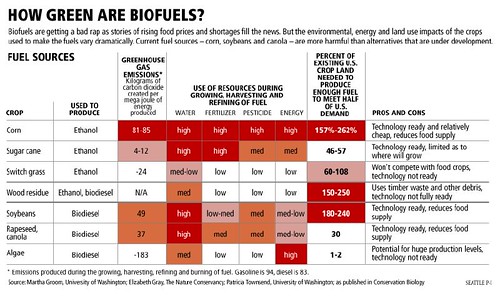One litre of biodiesel costs 14,000 litres of water
(Source: Greenbang, Alpha Galileo & Green Car Congress)
The ‘water footprint’ of bioenergy, i.e. the amount of water required to cultivate crops for biomass, is much greater than for other forms of energy. The generation of bioelectricity is significantly more water-efficient in the end, however – by a factor of two – than the production of biofuel. By establishing the water footprint for thirteen crops, researchers at the University of Twente were able to make an informed choice of a specific crop and production region. They published their results in the Proceedings of the National Academy of Sciences (PNAS) of 2 June. 
The researchers found, for example, that it takes an average of 14,000 litres of water to produce one litre of biodiesel from rapeseed or soya. However, the water footprint for rapeseed in Western Europe is significantly smaller than in Asia. For soya, India has a large water footprint, while the figures for countries such as Italy and Paraguay are more favourable. In the generation of bioelectricity, too, there are big differences between the crops: sugar beet has by far the smallest water footprint – jatropha is 10 times less water-efficient. For the production of bioethanol, sugar beet is again by far the favourite: one litre of bioethanol made from sugar beet takes 1,400 litres of water, as against 2,500 litres for sugarcane, which is widely cultivated in Brazil. A new report from Novozymes describes how Brazil could produce up to 8 billion liters (2.1 billion gallons US) of biofuel from sugarcane residues (bagasse) by 2020, representing additional export revenue for Brazil of up to US$4 billion. In Brazil, the proportion of bioethanol used in transport fuel is already at 50%; by comparison, the proportion is 7% in the US, 2% in China, and 1% in Europe, according to Novozymes.


